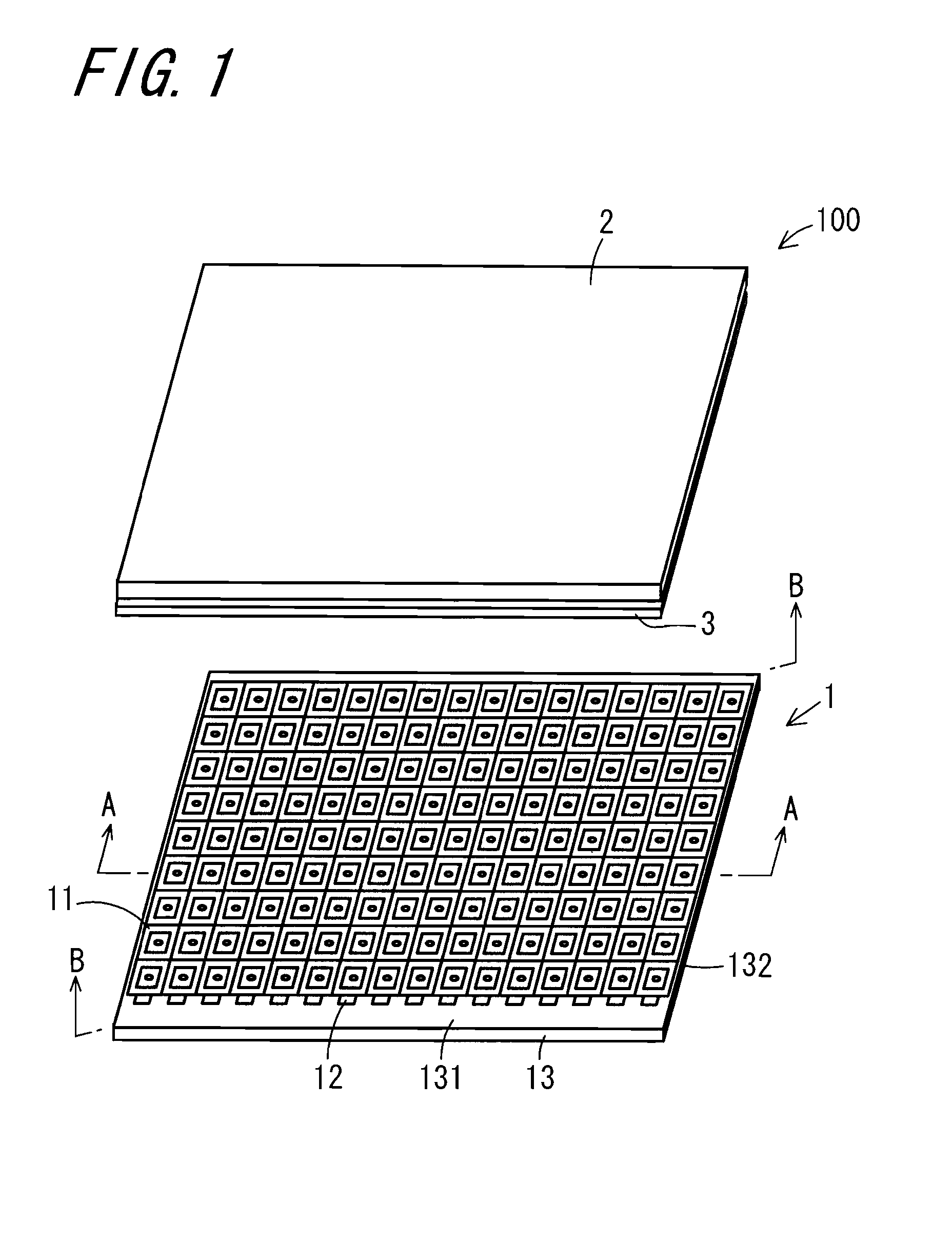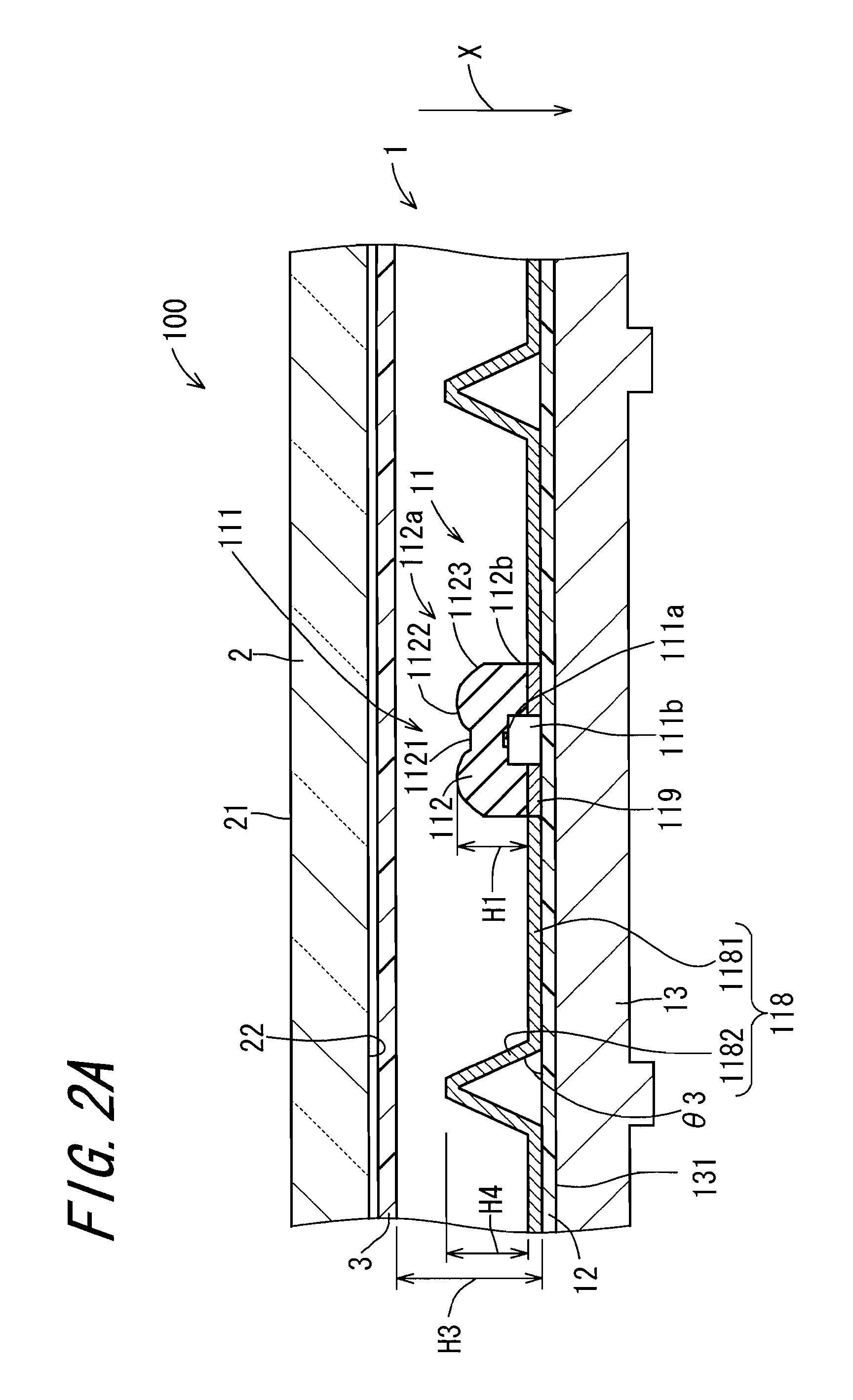Light-emitting device, illuminating apparatus, and display apparatus
a technology of light-emitting devices and illuminating devices, which is applied in the direction of semiconductor devices for light sources, lighting and heating devices, instruments, etc., can solve the problems of affecting the use of backlight units, affecting the appearance of display panels, and inevitably increasing the size of the bezel portion of the display panel, so as to reduce the quantity of light, reduce the profile, and facilitate the change of light quantity at the corners
- Summary
- Abstract
- Description
- Claims
- Application Information
AI Technical Summary
Benefits of technology
Problems solved by technology
Method used
Image
Examples
first embodiment
[0139]Next, the invention will be described. Except that a reflective member 113 as will hereafter be described is provided instead of the first reflective member 118, based on the basic structure thus far described, this embodiment is structurally identical with the above-described basic structure, wherefore the components that play the same or corresponding roles as in the basic structure will be identified with the same reference symbols, and the descriptions thereof will be omitted.
[0140]FIG. 7A is a view schematically showing the section of the liquid-crystal display apparatus 100 in accordance with the first embodiment of the invention taken along the line A-A of FIG. 1. FIG. 7B is a view schematically showing the section of the liquid-crystal display apparatus 100 in accordance with the first embodiment of the invention taken along the line B-B of FIG. 1. FIG. 8A is a perspective view of the reflective member 113, and FIG. 9A is a view showing the reflective member 113 as vie...
second embodiment
[0173]As shown in FIG. 15, the first step is to dispose the reflecting sheet 116 extending in the direction Y on the printed circuit board 12, on which a plurality of LED chips 111a each supported by the base support 111b are arranged in the direction Y, so as to surround each of the LED chips 111a. Next, the second step is to cover each of the LED chips 111a by the lens 112 on the reflecting sheet 116. Then, the third step is to dispose the first reflecting member 115 which comprises the first reflecting portion 1151 surrounding the reflecting sheet 116 and the second reflecting portion 1152 surrounding the first reflecting portion 1151, and also includes the second reflecting member 1132 placed on the first reflecting portion 1151. The assembly of the backlight unit of the second embodiment according to the above-described process steps is conducive to more efficient production of backlight units.
PUM
 Login to View More
Login to View More Abstract
Description
Claims
Application Information
 Login to View More
Login to View More - R&D
- Intellectual Property
- Life Sciences
- Materials
- Tech Scout
- Unparalleled Data Quality
- Higher Quality Content
- 60% Fewer Hallucinations
Browse by: Latest US Patents, China's latest patents, Technical Efficacy Thesaurus, Application Domain, Technology Topic, Popular Technical Reports.
© 2025 PatSnap. All rights reserved.Legal|Privacy policy|Modern Slavery Act Transparency Statement|Sitemap|About US| Contact US: help@patsnap.com



